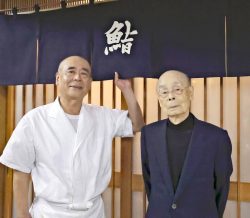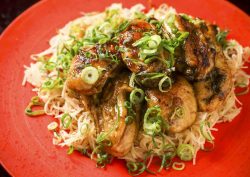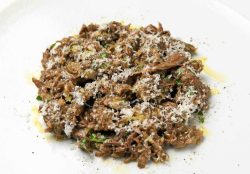Local Strawberry Varieties Crop Up in Succession; New Technology Creates Possibilities for Country’s Favorite Fruit

* Photos courtesy of the Tochigi prefectural government, the Oami-Shirasato municipal government in Chiba Prefecture, Ide Strawberry Farm and MD-Farm
13:30 JST, September 1, 2024
With its wide variety of Japanese- and Western-style strawberry sweets and being the world’s largest consumer of raw strawberries, Japan can be described as a “great strawberry power.” While unique new breeds of the fruit have cropped up across the country, innovations have also been taking place in their cultivation methods.
Half of world’s registered varieties
Tochigi Prefecture has boasted the country’s largest strawberry production for 55 consecutive years. Tochiotome had long been its main brand. This year, however, it has been overtaken by Tochiaika, newly developed by the prefecture’s Strawberry Research Institute.
Its distinctive characteristics are an increased sweetness and a heart-shaped appearance when cut lengthwise.
This new variety, produced only in Tochigi, accounts for nearly 60% of the total crop acreage in the prefecture. While Fukuoka Prefecture-grown, high-class variety Amaou has been popular in the Tokyo metropolitan area, “We aim to show our pride as the ‘kingdom’ of strawberries,” said the institute’s Toshihiro Mitsui, 52.
According to the Agriculture, Forestry and Fisheries Ministry, as of the end of June there were 310 strawberry varieties registered in Japan. This number is also said to account for half of the world’s registered strawberry breeds.
It was the Meiji period (1868-1912) that first saw the development of domestic strawberry varieties.
Around 1900, Hayato Fukuba, a doctor of agriculture and horticulturist at the Shinjuku Imperial Gardens (presently Shinjuku Gyoen National Garden) in Tokyo, improved a French-grown breed, succeeding in developing the first domestic variety, dubbed Fukuba.
Initially, the variety was reserved solely for consumption by the Imperial family and not to be taken out of the imperial household until the Taisho era (1912-26), when it spread throughout the country as a high-class variety for forcing culture, an agricultural practice.
Later, numerous varieties were developed originating from Fukuba and others, leading to a “revolution” in the 1980s.
Nyoho, a variety developed in Tochigi Prefecture, and Toyonoka, a Fukuoka Prefecture-grown breed, both became popular nationwide as they were sweeter compared to the strong acidity of conventional strawberries.
As a result of improved technology in forcing culture, it became possible to ship the crop in November, leading to the still-practiced custom of eating strawberry shortcakes at Christmas taking hold in Japan. Previously, the crop’s shipment period was from the beginning of a year to spring.
Easy to improve
Since the 2000s, the development of “local varieties of strawberries” has cropped up outside the two major production prefectures.
Through crossbreeding and mutation, unique breeds have been created in colors like pink, white and with one variety red all the way through to its inside. Now, across Japan there is fierce competition between many varieties.
“Improving strawberry varieties is relatively easy, and their price is stable, making it easy for newcomers to enter the market,” said Prof. Shinichi Hangui of the Tokyo University of Agriculture, an expert on the branding of the fruit.
“To survive in the market, each producing region’s branding strategy will be tested,” he added.
Stable cultivation year-round
As strawberries are vulnerable to heat and sunlight, Japan relies on imports from the U.S. and elsewhere during the summer. However, there may come a time when domestically grown strawberries are available year-round.
MD-Farm, a startup based in Shibata, Niigata Prefecture, is constructing a 400-square-meter strawberry cultivation plant in Yamagata Prefecture.
The company’s unique production system using light-emitting diodes (LEDs), a designated growing medium and nutrient solutions allow for stable production without the need for agricultural chemicals or honeybees for pollination.
“In this factory, we can grow strawberries in all seasons,” President Yuki Matsuda, 50, said.
By controlling the intensity of light, temperature and other factors, “their sweetness and size can be changed as we like,” he said. The company plans to begin full-scale production as early as next year.
Strawberries are also becoming more beloved by Japanese consumers.
According to a survey on favorite fruits conducted by MyVoice Communications Inc. in June this year, strawberries were the most cited at 72.1%, surpassing peaches and pears.
This was the fifth survey of this kind since the first was conducted in 2013. Strawberries have always topped the results, with respondents citing that they are sweet and can be eaten in one bite, while others said they can be used in a variety of sweets.
There is always buzz about the fruit. As a recent example, “candied strawberries,” or strawberries coated with a hardened sugar syrup, usually on a stick, have become popular among young people for their photogenic colors.
“As strawberries come in ample varieties and can be eaten in diverse ways, they have almost become entertainment,” said Mayumi Satoi, a food journalist who has also been working with farmers to develop new varieties.
Exports up 20-fold in 10 years
According to the U.N. Food and Agriculture Organization, the global production of strawberries totaled 9.57 million tons in 2022, with China being the largest producer at 3.35 million tons. Japan ranked 11th at 160,000 tons. Strawberries grown in Japan are increasingly popular overseas due to their sweetness and fragrance. According to the agriculture ministry, the fruit is exported mainly for household consumption in Hong Kong and Taiwan. In 2023, exports totaled 2,506 tons and were worth ¥6.16 billion, showing a 20- and 25-fold increase, respectively, over the past 10 years.
"Features" POPULAR ARTICLE
-

Sanrio to Open Museum in Yamanashi Pref. Dedicated to Founder, Exhibits Include Hello Kitty, Other Characters
-

Legendary Sushi Chef Jiro Ono Turns 100: ‘I Have No Regrets’
-

Autumn Foliage Surrounds Visitors to Tokyo’s Showa Kinen Park
-

My Daughter No Longer Speaks to Me, But I Want to See Her and My Grandchild
-

Kumamoto: Public Bath Refurbished as Library Where You Can Chat, Take Photos
JN ACCESS RANKING
-

Keidanren Chairman Yoshinobu Tsutsui Visits Kashiwazaki-Kariwa Nuclear Power Plant; Inspects New Emergency Safety System
-

Imports of Rare Earths from China Facing Delays, May Be Caused by Deterioration of Japan-China Relations
-

University of Tokyo Professor Discusses Japanese Economic Security in Interview Ahead of Forum
-

Japan Pulls out of Vietnam Nuclear Project, Complicating Hanoi’s Power Plans
-

Govt Aims to Expand NISA Program Lineup, Abolish Age Restriction


























